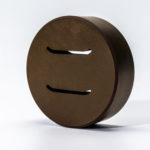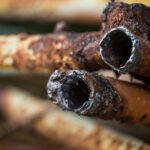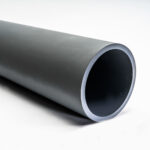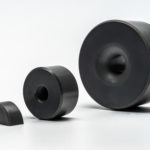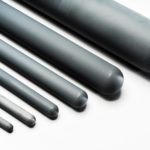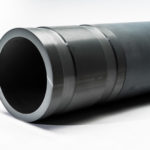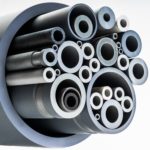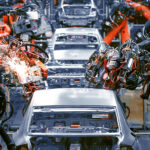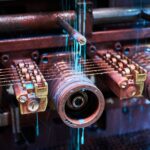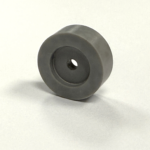Cross-contamination poses a constant challenge to industries where purity and consistency are critical, such as food processing, pharmaceutical packaging, polymer extrusion, and medical device manufacturing. Residues, microbial growth, or wear particles from one production run can compromise the next, risking product quality, regulatory compliance, and costly downtime. Because cross-contamination often stems from the condition of the tooling, attention naturally turns to the forming dies used in many hygiene-critical processes. Their precision and surface integrity determine the level of clean, reliable operation that can be sustained between production runs.
Category Archives: Uncategorized
Choosing chemical-resistant materials for chlorine-based industrial conditions
A range of industrial processes depend on chlorine for their effective operation, including chemical synthesis, water treatment, polymer production, and metal refining. However, its extreme reactivity poses significant challenges for long-term safety and material reliability. When chlorine combines with moisture or heat, it produces hydrochloric and hypochlorous acids that corrode even high-performance metals and polymers. This aggressive behaviour generates harsh operating environments where corrosion can lead to leakage, contamination, and costly equipment failure. Choosing the right chemical-resistant materials for chlorine-based industrial conditions is therefore vital to ensure process safety, reliability, and long-term performance.
Exploring aluminium casting products for the food industry
Cleanliness, consistency, and regulatory compliance are key standards in the food industry, serving as non-negotiable requirements that must be met to minimise contamination risks, ensure efficient operations, and protect product integrity. From the machinery that processes food to the packaging that preserves it, food and beverage manufacturers require materials that are hygienic, durable, and thermally stable. One of these materials is aluminium, a metal valued for its versatility, corrosion resistance, and thermal performance, qualities that are harnessed through casting to produce food-grade components with precision and reliability.
What makes ceramic extrusion dies ideal for structural components?
Producing structural components, such as aluminium window and door frames, copper pipe and wiring, and roof structures requires manufacturing methods that deliver high dimensional accuracy and surface integrity. One such technique for shaping structural components is extrusion, and at the heart of the extrusion process is the die. Manufacturers use ceramic extrusion dies to produce precise, repeatable profiles that retain their accuracy and surface quality over long production runs, even when processing highly abrasive or chemically aggressive feedstocks. Their wear and corrosion resistance, dimensional and thermal stability, and smooth surface finish make them particularly valuable for generating structural components that must maintain exact geometry, defect-free surfaces, and consistent performance under demanding service conditions.
How do thermocouple protection tubes ensure melt consistency for automotive castings?
Achieving consistent quality in automotive castings begins with controlling the melt. Whether forming engine blocks or structural EV components, maintaining a uniform temperature and composition in the molten metal is essential for avoiding defects and ensuring performance. Thermocouples provide the necessary temperature data used to regulate furnace conditions, coordinate alloying and degassing steps, and control the timing of casting operations, but in harsh molten environments, they rely on thermocouple protection tubes for accurate, long-term operation. When made from silicon nitride and Sialon, thermocouple protection tubes offer the durability and resistance needed to support precise thermal control and ensure consistent melt conditions.
Why use sialon riser tubes for low-pressure die casting of car parts?
Low-pressure die casting (LPDC) is a controlled manufacturing method used to produce lightweight, high-strength aluminium car parts including wheels, engine blocks, and suspension components. The process works by applying low air pressure to move molten aluminium from a sealed holding furnace into a steel mold, allowing for accurate filling and minimal porosity. Central to this system is the riser tube, which ensures a clean, steady transfer of metal from furnace to mold. Sialon riser tubes, made from silicon nitride-based ceramics, are particularly well suited to the demands of low-pressure die casting thanks to their resistance to heat, corrosion, and mechanical wear. These properties help maintain stable casting conditions and consistent part quality across production cycles.
How to cast aluminium engine block parts cost-effectively and consistently
Aluminium engine block parts are foundational to the construction of internal combustion engines, providing structural integrity and housing for critical components such as cylinders, bearings, and coolant passages. Yet, consistently casting these parts at scale without compromising quality or cost-efficiency remains a manufacturing challenge. One powerful yet underutilised strategy for improving the casting process is the integration of advanced ceramics, specifically sialon and silicon nitride, into key stages of the workflow. Used strategically, these materials can stabilise the casting process, reduce operational costs, and enhance output quality under the rigorous demands of aluminium engine block part production.
Cast vs billet aluminium for car parts: Key manufacturing considerations
Every car on the road is the result of thousands of engineering decisions, some visible and others buried deep within the chassis. Among these, one of the most fundamental choices is how each component is manufactured. Although often overlooked, the decision to manufacture a component from cast or billet aluminium carries long-term consequences for performance, production speed, and cost.
Aluminium has become vital in automotive design, valued for its ability to reduce weight while maintaining structural integrity. But how it’s processed shapes its final properties. Casting and billet machining offer two very different routes to the same destination: a finished component ready to be bolted into a vehicle.
Addressing key challenges facing ceramics in the wire and cable industry
Ceramics have transformed wire and cable manufacturing, making it possible to produce stronger, more heat-resistant, and longer-lasting components. But innovation comes with obstacles. Brittleness, high production costs, and thermal expansion mismatches can limit their use in wire and cable applications. Rather than barriers, these challenges are driving advancements in ceramic formulations, processing techniques, and hybrid materials, ensuring ceramics continue to push the industry forward.
What role do advanced ceramics play in wire and cable drawing?
Wire and cable drawing is a fundamental manufacturing process used to produce precisely sized metal wires for applications in telecommunications, automotive, aerospace, and construction. The process involves pulling metal through a series of dies to reduce its diameter while ensuring uniformity. However, the extreme stress, friction, and heat generated in the wire and cable drawing process place significant demands on the materials used for drawing dies, guides, and capstans.
Traditional materials like tungsten carbide, while durable, suffer from wear over time. This leads to frequent replacements and increased operational costs. Advanced ceramics, Silicon Nitride (Si₃N₄), Sialon (Si-Al-O-N), Zirconia (ZrO₂), Alumina (Al₂O₃), and Silicon Carbide (SiC), offer a superior alternative. The exceptional hardness, wear resistance, and thermal stability of these advanced ceramics make them indispensable in improving efficiency, extending tool life, and enhancing the quality of drawn wire.

